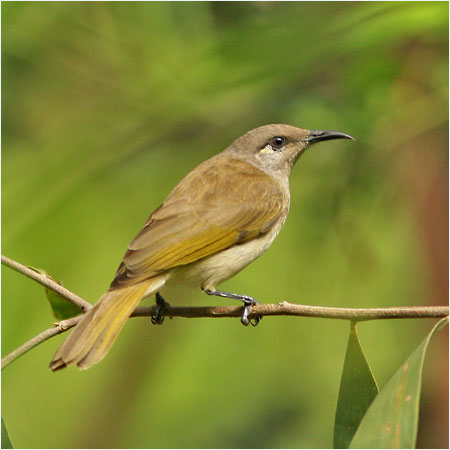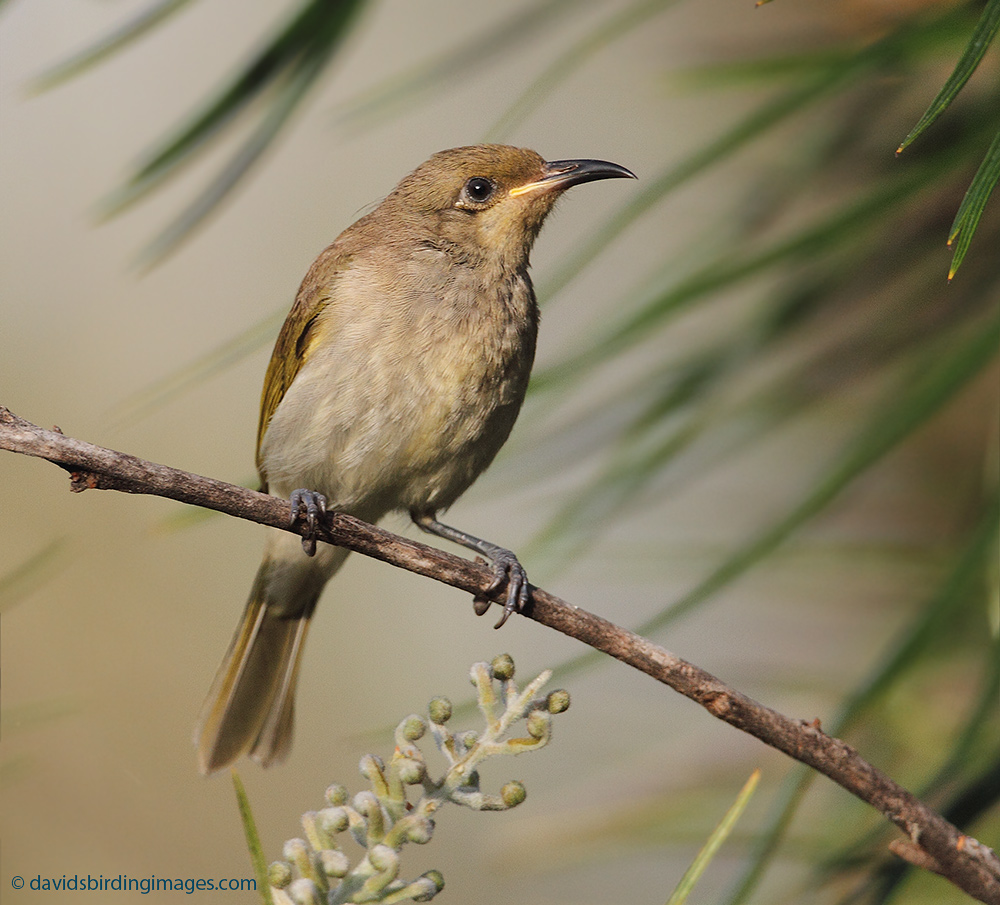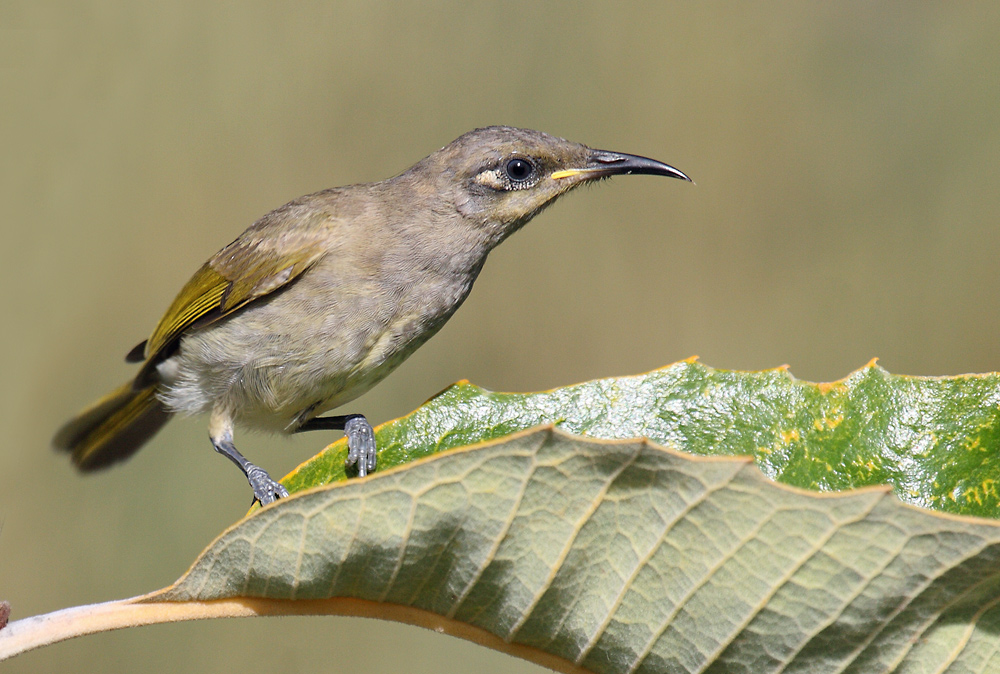
Lichmera indistincta
TAXONOMY
Meliphaga indistincta Vigors and Horsfield, 1827, King George
Sound, Western Australia.
OTHER COMMON NAMES
English: Least honeyeater, warbling honeyeater; French:
Mйliphage brunвtre; German: Braunhonigfresser; Spanish: Pбjaro
Miel Castaсo.
PHYSICAL CHARACTERISTICS
4.3–6.3 in (11–16 cm); 0.3–0.4 oz (9–11 g). Drab olive-brown
upperparts with a whitish patch behind eye. Underparts fade
from light brown throat to whitish belly.
DISTRIBUTION
Most of Australia, except for the southeast, southern coast, and
parts of the center. Trans-Fly region of southern New Guinea,
Aru Islands, and Lesser Sundas from Tanimbar Islands west to
Bali. The only honeyeater to cross Wallace’s Line. The form
found in the Lesser Sundas is sometimes regarded as a distinct
species (L. limbata). Three subspecies recognized in Australia.
HABITAT
Mangroves, paperbark, and eucalyptus forests and woodlands,
heathlands, semi-arid shrublands in Australia; also in parks and
gardens. Mangroves, monsoon woodlands, scrub, secondary
growth, and cultivated areas in Lesser Sundas, from sea level to
8,000 feet (2,600 m).
BEHAVIOR
Usually singly or in pairs, sometimes in small groups. Present
year-round in many areas but also show local movements in response
to flowering, and occasionally found outside normal
range. A renowned singer with loud song described as rich,
cheerful, pleasing, and musical.
FEEDING ECOLOGY AND DIET
Feed on nectar from flowers of trees and shrubs, including
mangroves, eucalyptus, tea trees, and grevilleas. Insects are
taken from foliage and by aerial capture.
REPRODUCTIVE BIOLOGY
Long breeding season, although birds in northern Australia
breed in the dry season from April to September and those in
the south breed in spring and summer (July to January).
Tightly woven cup-shaped nest is usually within 6 ft (2 m) of
the ground. Clutch of two (occasionally one or three) eggs.
Probably only the female incubates, but both sexes feed young.
Incubation period lasts 12–14 days, and fledging occurs at
about 14 days.
CONSERVATION STATUS
Not threatened; common in many parts of range.
SIGNIFICANCE TO HUMANS
Successful in towns, where their song is appreciated by many.
Photo Gallery of - Brown honeyeater




 Animalia Life
Animalia Life